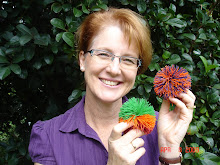- It is very important to check whether the class teacher has left a daily programme. If so there is an expectation that this work will be completed and marked. I always leave a detailed review of the day regarding the work covered. I also always add "my own flavour" throughout the day in the transition activities. This is where a well organized class level file is worth its weight in gold! You can't assume a detailed plan will be there for you to follow.
- Check the Class Timetable. Take note of your duties or specialist lessons. Find out where these are held. Note the bell times and you might like to add them to the day's agenda on the board. (See previous blogs)
- Locate the class roll. Familiarise yourself with the names on the roll. The class roll is a legal document and must be correctly completed. I always carry a black pen for this very reason! Make sure the roll is accurate at the end of the day. Some school require you to initial it too. Check with school policy.
- Opening the room for the day. I find in order to minimize any fuss when I am unfamiliar with the class, I am happy to get the room ready for the day. A smoother start is ensured.
- Introducing Yourself: This is where you have to quickly assess the needs of the class and the best way to start the day on the right foot. Sometimes you need to be clear and to the point and with other groups you might like to make it fun!
The following are a couple of different ideas I have found interesting in starting the day well. I have collated all the ideas in my handbook "Relief Insight" and happily add more all the time!
- I do think it is a good idea to write your name on the board so the children have the visual memory link. I am not outstandingly creative when it comes to drawing but I have learn a few "gorgeous" cartoons. You only need a few to impress a class no matter what age! One of my best loved drawing is of a very contented frog! Now my surname doesn't start with F; however, F does represent who I am as the relief teacher for the day.....FIRM,FUN, & FAIR. Three little FFF sit under the cute frog and I refer to them throughout the day when required. Classes who get to know me can often recall the meaning of the FFF without any prompting.
- This one is for that challenging new class usually upper primary who look like they are going to eat you alive! (It is all about throwing them off their game!) Stand at the front of the room and wait for the hush. It will come as the class waits for the first thing you are going to say! Will it be the usual rhetoric regarding behaviour expectations? Simply greet the class and turn purposefully to the board and write your name in alpha code on the board. (You know.....A=1, B=2, C=3 etc) Announce to the class that this is my name and the first person to crack the code and correctly spells my name will win a prize! You will never see children move so fast! Reward the winner in some way and then challenge everyone to write their name in code. If all children can do this on a slip of paper (complete with real name and alpha code name) I have then collected them and used this as means to allocate positions of responsibility through out the day by randomly drawing out the lucky child.... 1-4-1-13 will you please take this message to the office? I assure you Adam will have a smile on his face and all the class listens intently to work whose name is drawn. The Spy Kids movie made this technique very popular. Adding these details on a business card or name card on the desk is also worthwhile. The natural transition is to use current spelling words as alpha code words and see which spelling word has the greater value, odd/even value, prime or composite value when you add all the numbers together.
I will add other ideas on the blog in this section as there are so many as you teach the different year levels. I will try to tag the ideas under the same headings as the chapters in my handbook. Love to hear your ideas especially people who are teaching in other countries other than Australia.
Blessings for the journey......
Live,learn and remember to laugh!
Carmel

No comments:
Post a Comment